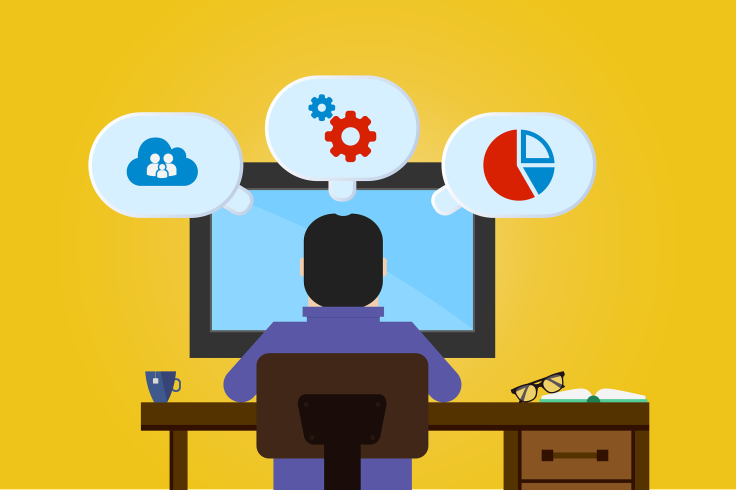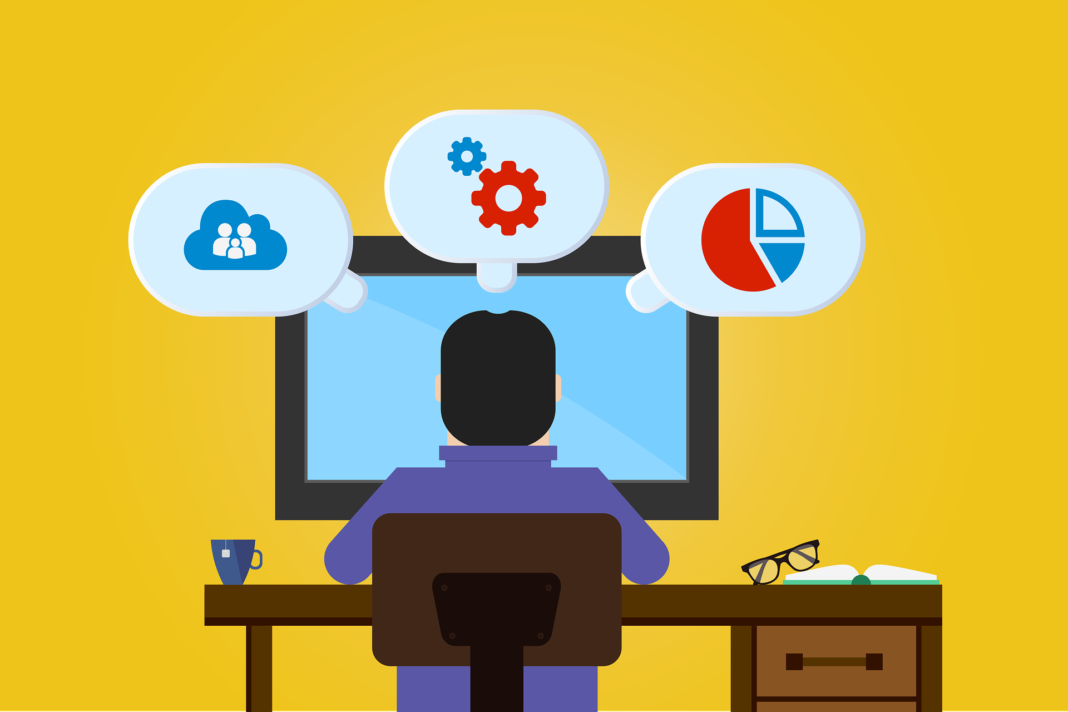イギリス
The only true constant in the universe is change. This is a pretty noticeable trend when reflecting on even just the past few years. Rewind the clock just a handful of years and our society looks wildly different. This is because of an intersection that occurred in early 2020. The onset of the COVID-19 pandemic that swept over the globe met a society that already had the technological groundwork laid for a full on transition to a much more remote and digital world. However, big businesses, small businesses, and just about every organization in between had already been using some sort of software or technology in their day-to-day operations for some time. As such, business leaders, managers, and organizational decision-makers have all encountered that point in time where the software being used simply no longer meets the needs of the users or the overarching organization.

Pixabay
This can cause the need for a software-transition. Perhaps it’s time to upgrade to a bigger and better enterprise software because your organization has grown so quickly. Or, maybe you just need a different suite of features because of an operational pivot. No matter the case, transitioning to a new software can sometimes be disruptive, difficult, and frustrating; especially for the users who need to learn the new software from the ground up.
In order to make the burden of learning a new software easier on your team, try these transition tips and strategies.
“Undoubtedly, technology evolves at a startlingly furious pace. New tech, coupled with changing market demands, will directly impact the trajectory of your business. At some point, you’ll be faced with a choice: upgrade your existing software or opt for a software transition. Regardless of your choice, adopting disruptive technology is a must. According to Forbes, 27% of companies believe that keeping up with new digital solutions is a matter of survival. In fact, 56% of those that embrace emerging tech trends report significantly increased revenues.”
– Joshua Whitmore, Software Consultant, Entrance –
イギリス Loop Them in on the Software Selection Process
One of the best things for management to do when facing a software transition is to loop their team members in on the software selection process. In fact, as soon as leadership knows for sure that they’re going to start shopping for a new software, they should inform the team members and even garner their input and feedback on the shopping process. This could mean listening to the features that they’d like to see in the new software, or just working to understand their complaints and hardships with the previous software.
“It makes a big difference when you bring the team members in on the selection process. In fact, this can even be a bit of a management-test for someone in the organization. Give someone who uses the software on a daily-basis the task of conducting research and presenting options; this could be an opportunity for them to make a significant contribution.”
– Melanie Bedwell, E-commerce Manager, OLIPOP –
Giving your team members a chance to learn about the options available for the replacement software also allows them to ask important questions about the functions and features of the software before a final implementation is made.
“At the end of the day, it’s all about communication and conversation, really. We want to enable and empower our employees, which in today’s day and age requires the implementation and integration of software solutions. But we can at least hear our people out and let them have a say in which software they’re going to be using day-in and day-out.”
– Dan Potter, Head of Digital, CRAFTD London –
イギリス Offer General and In-Depth Training Sessions
Another good way to make sure that team members are comfortable with the transition to a new software is to offer training sessions. There are a variety of times that make the perfect opportunity for a training session. For instance, after a final shopping decision is made, the company should host a training session on whichever software was chosen.
In addition to an initial training session, companies and managers should offer further in-depth and more advanced training sessions on the software within the first six months-a year after implementation.
“The new software itself isn’t going to offer any value if no one on the team knows how to use it. Conducting thorough and high-quality training on the new software your company is implementing will make sure that users are comfortable with the workflows involved.”
– Jae Pak, Founder, Jae Pak MD Medical –
Even after the first year of a software transition/implementation, continual training sessions can be helpful as the softwares themselves roll out new updates and features. By hosting optional training sessions for the software your team is using on a regular basis, you can feel more confident that everyone is on board and making the most out of the features and functions available.
“It’s important to host training sessions on the software every quarter or so. Many times it can be a really quick refresher course with very few questions. It becomes vital in the wake of updates or additional features that the software rolls out, though.”
– Miles Beckett, CEO and Co-founder, Flossy Dental –
イギリス Be Open to Feedback
Being open to team member feedback isn’t only an important thing during the shopping and selection phase. Managers, organizational leadership, and decision-makers also need to be open and receptive to feedback in the period of time following a software transition. It’s these immediate first few months that will give a lot of important insight into the way a team is adapting to the introduction of a new software.
“Those first three months or so are incredibly telling. Sometimes it’s even shorter than that – like a week goes by and you already know the software is a hit, or you’re going to need to try again elsewhere.”
– Ryan Rottman, Co-Founder and CEO, OSDB Sports –
Listening and being receptive to team member feedback after a software transition is incredibly important because if it’s ignored, it will only demoralize and demotivate the individuals comprising the team. Not only that, but this can breed feelings of frustration and actually lead to higher rates of employee turnover. Employee turnover is never a good thing, but considering that a high employee churn-rate is one of the most costly expenses an organization can incur, it pays to listen to employees and to always be open to feedback.
“It’s never easy to see a good worker leave an organization because they felt like they weren’t being heard or their impact didn’t matter. It’s really important that we empower our employees and if they bring something up about a process or work-flow, we need to address that as organizational leaders.”
– David Culpepper, MD, Clinical Director, LifeMD –
イギリス Set Reasonable Expectations
Another way to make the transition to a new software easier on your team members is to set reasonable expectations for their integration, implementation, and learning curves. No one is going to learn every single detail about a new software overnight. Giving your team a bit of a grace period will ensure that they don’t feel unfairly rushed or overly criticized for not knowing all of the ins-and-outs of the new software.
“It’s not very fair to expect someone to learn every little detail about a new software in a day, a week, or even a month. Giving people a little bit of patience and practice to get familiar with the new software will go a long way.”
– Chris Bridges, CEO, VITAL Card –
The other benefit to setting reasonable and realistic learning expectations when your team members are introduced to a new software is that it gives people a chance to celebrate their success and their progress. Having a space in which team members can feel fulfilled and proud of themselves can actually significantly improve levels of individual productivity.
“Celebrating the small victories is always important. This is true both on an individual level as well as the scale of the overarching company. The big wins can’t ever happen without all the tiny daily victories we experience.”
– Ryan Delk, CEO, Primer Microschools –
イギリス Making use of Native Software Tutorials
Finally, one of the simplest and most convenient ways for you to teach team members the ins and outs of the new software is through native software tutorials. Almost every software provider includes a variety of tutorials as a part of the innate experience.
“Think about Clippy from back in the early days of Microsoft Word. Sometimes software tutorials still have that kind of hokey feel about them, but they’re super useful. If you’re looking to become an expert in your company’s software, just start going through the tutorials. You’ll learn a ton.”
– Max Schwartzapfel, CMO, Fighting For You –
The nice thing about native software tutorials is that they’re designed by the same people who created the software. As such, they’re often loaded with information that is not only accurate, but also incredibly specific and informative.
“Whenever you go through major software transitions, always give your team a full day or two to just work with and practice the new software. Suggest taking that time to go through the tutorials available, while keeping in mind that people have their own learning-strategies.”
– Ann McFerran, CEO, Glamnetic –
イギリス Final Thoughts on Software Transitions
There comes a time in the trajectory of every organization when the current softwares being used simply don’t cut it anymore. In order to implement a new software smoothly, and without much operational interruption, make sure that your team members are involved from the very start of the shopping process, and give them plenty of chances to train with and learn about the software.
“Any platform change needs to be motivated by business objectives, and these objectives must be clearly communicated to the team. Once that’s happened, give the team slightly over a month to transition. They need time to figure out how the new platform caters to their needs and to the business’ objectives.”
– Maxim Garkavtsev, QArea Software Development Company –



